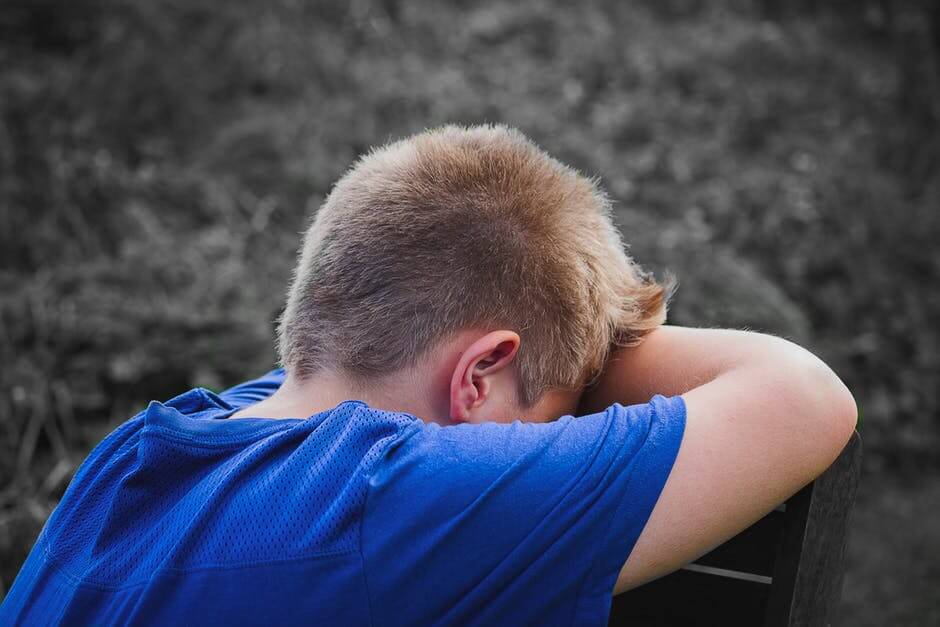Teach Your Child to Cope with Teasing

Children can be wonderful, but they can also be very cruel. To a large extent, it is not all their fault: some have bad examples at home that they pick up. Unfortunately, these attitudes acquired within the home can cause harm to other children, who don’t know how to deal with them. And sometimes, there is no choice but to teach our children to cope with teasing.
The first thing to note is that children are not bad by nature. Most use teasing as a defense mechanism because they believe it is a (wrong) way of relating or imitating their parents.
Some parents pass on their frustrations and low self-esteem to their children; others are simply accustomed to that kind of attitude and unintentionally empower them.
As parents, we often wish we were the ones to confront those children. Seeing our children suffer and having a bad time causes an anguish and a rage that only those who experience it can describe. But it is not the right way: the child has to learn to deal with such situations.
How do I help my child cope with teasing?
Listen to them
Don’t humiliate them
Many parents humiliate their children in an attempt to be brave. They think that calling them cowards or crybabies will make them strong. And it is not like that. Children don’t respond to teasing as adults do, and therefore, empathy must be shown.

Teach them to ignore teasing
A good method in these situations is to ignore the kids who are teasing them. Most of the time, kids will get tired of their malicious jokes going wrong. When that happens, they stop insisting, and even treat the child as if nothing had ever happened.
“The brave is afraid of the opposite, the coward, of his own fear.”
-Francisco de Quevedo-
Use Wit
Wit can be a very powerful weapon. Teach your child to respond quickly and ironically, and in a short time you will notice results. Remember that this doesn’t imply making fun of the other child, because that would mean falling into the same game.
Nor should your child respond with violence or insults. Your child should respond in a way in which the bully knows that the child is not affected by their comments.
Encourage them to stick together with other children
Friendships are a very good way to prevent a child from isolating themselves in the face of these incidents. They will feel protected and valued and the bully will either stop messing with your child, or learn that they do not care.
In addition, there may be more children in the same situation. In that case it could be beneficial, because it would generate a great mutual understanding.

Watch for warning signs
Maybe what we consider to be nonsense is something serious. There are times when, unfortunately, taunts end up in harassment. In that case, the first thing to do is talk to the teachers and those responsible to express your doubts. From that moment on and if the situation gets worse, we must report it.
What if my child makes fun of others?
If it is our child who makes fun of others, we have to seriously consider why they do it. We should not create drama but, as mentioned before, listen to their motives.
They may also be the focus of teasing and need help, or imitate us in certain toxic behaviors. If so, not only must they change their attitude… we must also change our own attitude.
It is necessary to explain to them that making fun of others is wrong. It hurts a lot of people, and it is likely that if they continue, nobody will want to be their friend.
If they are kind to others, then others will most likely be kind to them as well. And, of course, we must emphasize that helping others will always make us happier than destroying them.
Children can be wonderful, but they can also be very cruel. To a large extent, it is not all their fault: some have bad examples at home that they pick up. Unfortunately, these attitudes acquired within the home can cause harm to other children, who don’t know how to deal with them. And sometimes, there is no choice but to teach our children to cope with teasing.
The first thing to note is that children are not bad by nature. Most use teasing as a defense mechanism because they believe it is a (wrong) way of relating or imitating their parents.
Some parents pass on their frustrations and low self-esteem to their children; others are simply accustomed to that kind of attitude and unintentionally empower them.
As parents, we often wish we were the ones to confront those children. Seeing our children suffer and having a bad time causes an anguish and a rage that only those who experience it can describe. But it is not the right way: the child has to learn to deal with such situations.
How do I help my child cope with teasing?
Listen to them
Don’t humiliate them
Many parents humiliate their children in an attempt to be brave. They think that calling them cowards or crybabies will make them strong. And it is not like that. Children don’t respond to teasing as adults do, and therefore, empathy must be shown.

Teach them to ignore teasing
A good method in these situations is to ignore the kids who are teasing them. Most of the time, kids will get tired of their malicious jokes going wrong. When that happens, they stop insisting, and even treat the child as if nothing had ever happened.
“The brave is afraid of the opposite, the coward, of his own fear.”
-Francisco de Quevedo-
Use Wit
Wit can be a very powerful weapon. Teach your child to respond quickly and ironically, and in a short time you will notice results. Remember that this doesn’t imply making fun of the other child, because that would mean falling into the same game.
Nor should your child respond with violence or insults. Your child should respond in a way in which the bully knows that the child is not affected by their comments.
Encourage them to stick together with other children
Friendships are a very good way to prevent a child from isolating themselves in the face of these incidents. They will feel protected and valued and the bully will either stop messing with your child, or learn that they do not care.
In addition, there may be more children in the same situation. In that case it could be beneficial, because it would generate a great mutual understanding.

Watch for warning signs
Maybe what we consider to be nonsense is something serious. There are times when, unfortunately, taunts end up in harassment. In that case, the first thing to do is talk to the teachers and those responsible to express your doubts. From that moment on and if the situation gets worse, we must report it.
What if my child makes fun of others?
If it is our child who makes fun of others, we have to seriously consider why they do it. We should not create drama but, as mentioned before, listen to their motives.
They may also be the focus of teasing and need help, or imitate us in certain toxic behaviors. If so, not only must they change their attitude… we must also change our own attitude.
It is necessary to explain to them that making fun of others is wrong. It hurts a lot of people, and it is likely that if they continue, nobody will want to be their friend.
If they are kind to others, then others will most likely be kind to them as well. And, of course, we must emphasize that helping others will always make us happier than destroying them.
All cited sources were thoroughly reviewed by our team to ensure their quality, reliability, currency, and validity. The bibliography of this article was considered reliable and of academic or scientific accuracy.
- Castillo Quiñonez, G. G. (2015). Promover los valores sociales y familiares para evitar las burlas y el índice de malas palabras dentro del salón de clases en los niños de 4 a 5 años de la escuela Dr. Otto Arosemena Gómez año lectivo 2014-2015(Bachelor’s thesis, Universidad de Guayaquil Facultad de Filosofía, Letras y Ciencias de la Educación). http://repositorio.ug.edu.ec/handle/redug/13219
- Reynolds, C., & Richmond, B. (1997). Escala de ansiedad manifiesta en niños (revisada). CMAS-R. Manual. México: El Manual Moderno.
- Albornoz, N., Silva, N., & López, M. (2015). Escuchando a los niños: Significados sobre aprendizaje y participación como ejes centrales de los procesos de inclusión educativa en un estudio en escuelas públicas en Chile. Estudios Pedagógicos (Valdivia), 41(ESPECIAL), 81-96. https://scielo.conicyt.cl/scielo.php?pid=S0718-07052015000300006&script=sci_arttext
This text is provided for informational purposes only and does not replace consultation with a professional. If in doubt, consult your specialist.








